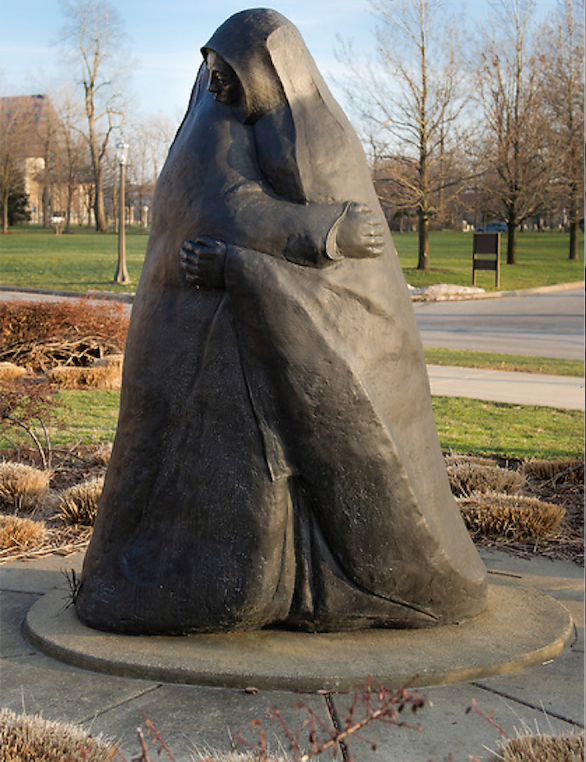
VISITATION OF MARY
The liturgy does not have a ceremony for every loss but it does offer a rich ritual repertoire from which we can draw inspiration and hope. From September 2021 through June 2022, I will explore with you here on this blog how we can ritually recognize, hold and welcome the grief among us.
This month of May comes to a close with the commemoration of the 3-month long visit between two cousins, both with child. Mary, pregnant with the Son of God, went to visit Elizabeth, who had conceived in old age! Mary, an unwed virgin mother and Elizabeth, barren throughout the usual childbearing years, would have faced judgement and scorn for their respective situations regarding motherhood. Internally, Elizabeth may have long known the disappointment of not having children of her own while Mary faced an uncertain future that, as we know, would include the sorrow of losing her son from the foot of the Cross. If we think about what led each of these women to this moment, we can be sure that both women have known vulnerability, both have known grief, and yet they come together in a moment of joy shared on this feast of the Visitation.
On the campus of the University of Notre Dame, a sculpted representation of this meeting between the cousins suggests the significance of this feast for each of us.

Forming a single conical shape on account of their cloaks and heavily pregnant bellies, Mary and Elizabeth embrace. What strikes one is the solidity and weight of the figures. The embrace they share consumes their individual fragility and their combined footprint has gravitas. When we show up for one another, the landscape changes.
Likewise, the Gospel reading on this feast offers us two pillars of prayer to help us experience blessing and joy in our own times of trial. When her son leaps in her womb, Elizabeth recognizes Mary as the mother of God and proclaims the words that are preserved in our Hail Mary prayer, “Blessed are you among women, and blessed is the fruit of your womb” (Luke 1.42). She extols Mary for believing that what the Lord proclaimed would be fulfilled. Mary responds to Elizabeth’s words of blessing by praising God in a song known as the Magnificat, a canticle sung daily at Evening Prayer. The Magnificat is a song of reversals in which Mary expresses faith in God’s promise to replace grief and injustice with joy and equity.
Grief is part of life, but it does not preclude us from receiving blessing or praising God! The meeting of these cousins, our spiritual mothers, shows us that through the support of one another we can recognize and experience God’s love and mercy. I invite you to pray the Hail Mary and especially the Magnificat as a source of support, solidarity and comfort.
Magnificat (Luke 1:46-55)
My soul proclaims the greatness of the Lord,
my spirit rejoices in God my Saviour,
for he has looked with favour on his lowly servant.
From this day all generations will call me blessed,
the Almighty has done great things for me,
and holy is his name.
He has mercy on those who fear him
in every generation.
He has shown the strength of his arm,
He has scattered the proud in their conceit.
He has cast down the mighty from their thrones,
and has lifted up the lowly.
He has filled the hungry with good things,
and the rich he has sent away empty.
He has come to the help of his servant Israel
for he has remembered his promise of mercy,
the promise he made to our fathers,
to Abraham and his children for ever.
Simone Brosig is an educator, author, and liturgy consultant with a PhD in Medieval Studies and a MA in Pastoral Liturgy from the University of Notre Dame. She writes and teaches about living the liturgy. Simone is a near-native Calgarian, who enjoys spending her free time “forest bathing” in the Rockies and learning languages. Simone’s new book, Holy Labours: A Spiritual Calendar of Everyday Work, can be found here.

